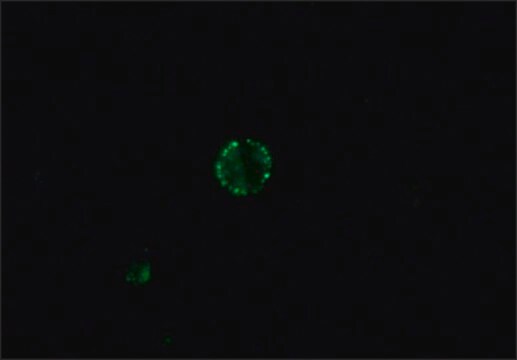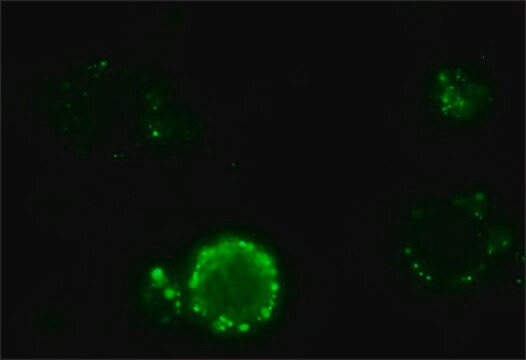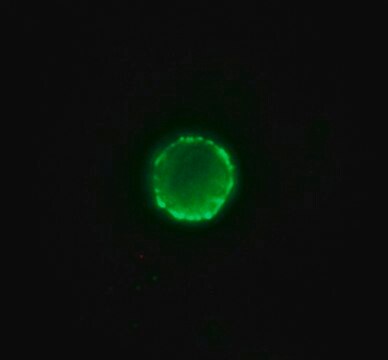Descrição geral
IgG is present in large quantities in the human serum. It constitutes about 10-20% of the plasma proteins. IgG is composed of glycoproteins, out of which it is 82-96% proteins and 4-18% carbohydrates. It consists of four sub-classes i.e IgG1, IgG2, IgG3, and IgG4. IgG is composed of four polypeptide chains-two heavy chains (γ chains) and two light chains (κ or λ chains) which are linked by inter-chain disulfide bonds. The heavy chains consist of a N-terminal variable domain (VH) and three constant domains (CH1, CH2, CH3). A hinge region exists between the CH1 and CH2 region. The light chains have one N-terminal variable domain (VL) and one constant domain (CL). The heavy and the light chains are linked at VH and CH1 domain to form the Fab arm (Fragment antigen binding). The antigen binds to the V regions of the antibody.
Especificidade
Anti-Cat IgG (whole molecule)-FITC antibody specifically recognizes cat IgG. Goat anti-cat IgG is conjugated to Fluorescein Isothiocyanate (FITC) in an alkaline reaction, then further purified to remove unbound FITC.
Imunogênio
Purified cat IgG
Purified cat IgG.
Aplicação
Anti-Cat IgG (whole molecule)-FITC antibody has been used in immunofluorescence antibody test (IFAT), immunofluorescence.
Anti-Cat IgG (whole molecule)-FITC antibody may be used for immunofluorescence at a working antibody dilution of 1:32. The antibody was used in indirect fluorescent antibody test (IFAT) to detect Toxoplasma specific antibodies in cat at a dilution of 1:100.
Anti-cat IgG (whole molecule) −FITC antibody can be used in direct (1:32) and indirect immunofluorescence (dilution 1:64).
Ações bioquímicas/fisiológicas
IgG antibody plays a crucial role in humoral immune responses such as phagocytosis, complement activation, placental transport and cell surface-receptor binding. FITC (fluorescein isothiocyanate), a fluorochrome dye conjugation is useful in localization of antigen-antibody interaction of biological structures like cells or tissues. Anti-cat IgG (whole molecule) -FITC antibody can be used in immunofluorescence study of exfoliative dermatitis in cats. Goat anti-cat IgG antibody is immonospecific for cat IgG.
IgG antibody subtype is the most abundant serum immunoglobulins of the immune system. It is secreted by B cells and is found in blood and extracellular fluids and provides protection from infections caused by bacteria, fungi and viruses. Maternal IgG is transferred to fetus through the placenta that is vital for immune defence of the neonate against infections.
forma física
Solution in 0.01 M phosphate buffered saline, pH 7.4, containing 15 mM sodium azide.
Exoneração de responsabilidade
Unless otherwise stated in our catalog or other company documentation accompanying the product(s), our products are intended for research use only and are not to be used for any other purpose, which includes but is not limited to, unauthorized commercial uses, in vitro diagnostic uses, ex vivo or in vivo therapeutic uses or any type of consumption or application to humans or animals.








